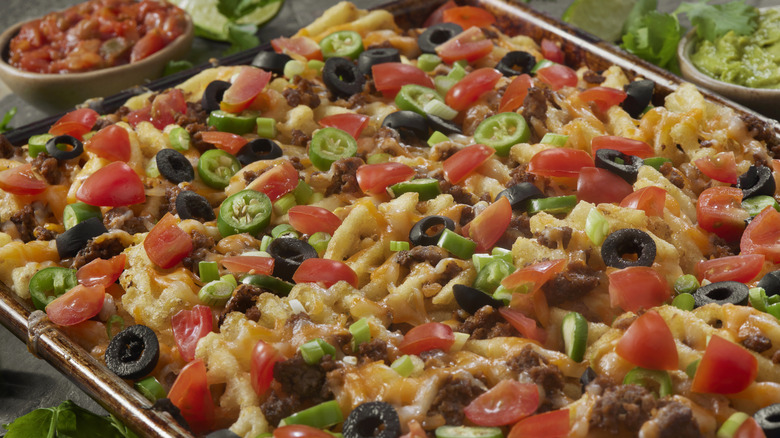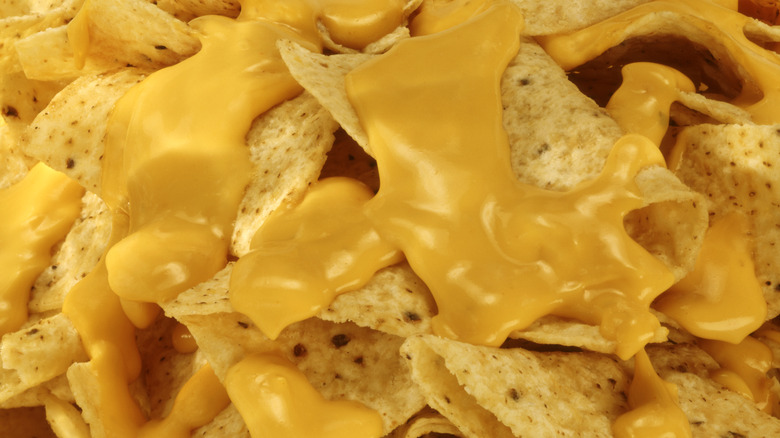Here's How To Properly Melt Your Cheese For Delicious Nachos
Nachos are the perfect game day food. They're the ideal vehicle for toppings of all kinds — guacamole, strips of grilled steak, pulled pork, perhaps some bean dip, or chunky salsa. But the crowning glory for any tray of nachos is the cheese — plentiful, gooey, and melted just right.
The problem with melting cheese for nachos is that it can be hit or miss. Either it doesn't melt enough, leaving limp shreds of barely warm cheese on your chips, or it goes too far and the chips are covered in overcooked clumps of hardened cheese. You can use the best type of cheese for nachos and still end up with a puddle of grease, so there is something to be said for having a bit of patience. When melting your cheese, the trick is to go low and slow. High heat for too long can ruin your cheese and leave a mess.
Low and slow is the trick to melting cheese without breaking it
To ensure your cheese melts evenly when making nachos, make sure it's as close to room temperature as possible. Shredded cheese (not the pre-shredded stuff) works better because it exposes more surface area to the heat and will melt more evenly. The whole point is to melt it all at the same time, and gently over a low heat. Try to stay below 150 degrees Fahrenheit, any higher and the cheese will seize and harden.
Cheese is made of milk protein, water, fat, and salt. When cheese gets warm, the fat is what melts, and things get gooey. The emulsion of milk, water, fat, and salt will stay together so long as you heat the cheese gently — the milk proteins need to stay evenly dispersed throughout. The goal is to not break the emulsion by heating the cheese too much. Over melted cheese seizes because the proteins shrink in the heat, and as they shrink they expel grease and water — like an overcooked chicken breast or piece of steak.
Try making a cheese sauce
One trick to maintain cheesy, gooey nachos and lower the risk of accidentally breaking your melted cheese is to boost it with a sauce. You can make a cheesy béchamel, or mornay sauce, with a roux of butter and flour, then add your milk and cheese. Serve your nachos smothered in cheese sauce, or put it on the side as a dip.
To make the smoothest cheese sauce possible, turn to your pantry staples, namely cornstarch and evaporated milk. Cornstarch will stabilize the melted cheese by thickening the sauce with its starchy molecules, and the concentrated milk will add another dose of stabilization from the milk proteins. The sauce is pourable, glossy, and will set semi-hard. If you need to reheat it, you can add more milk and heat it gently over a low flame.
Choosing the right cheese for melting will also give you an increased chance of success. Aim for younger, softer cheeses like Monterey Jack or pepper jack that still have a high water content — and shred them yourself. Pre-shredded cheese is often coated in anti-caking agents that make uniform melting difficult to achieve.


